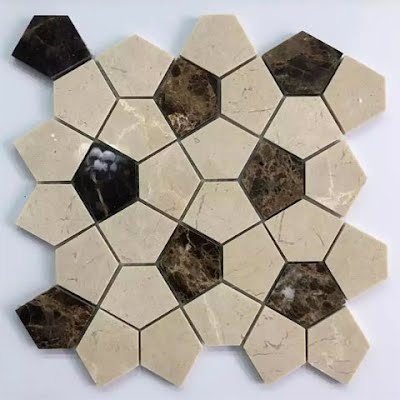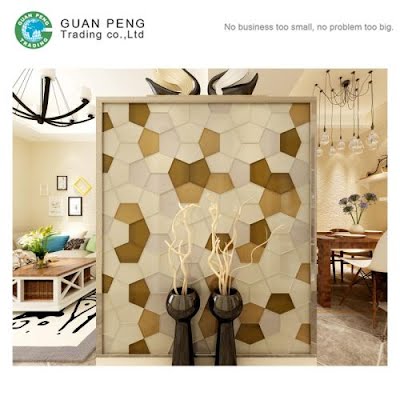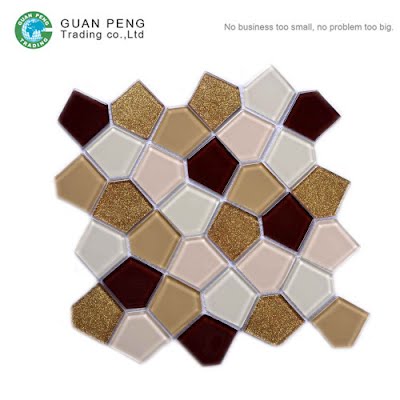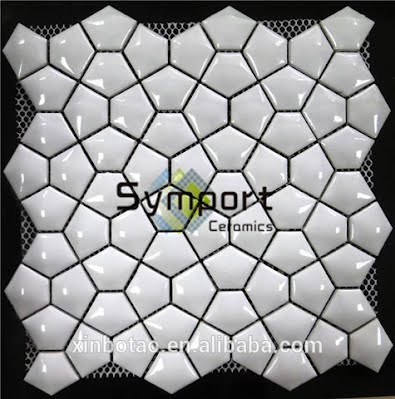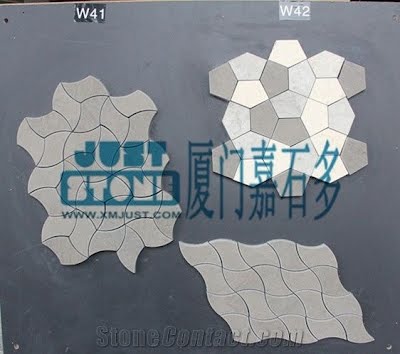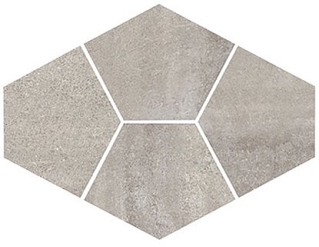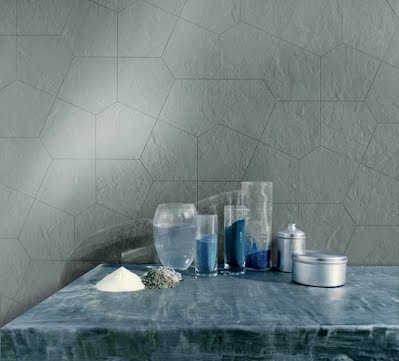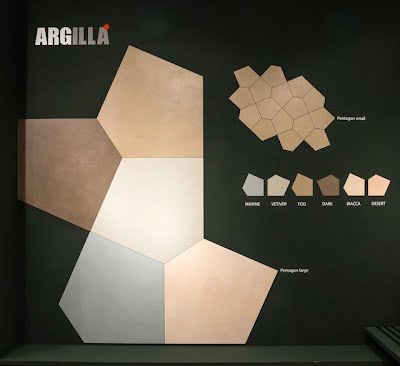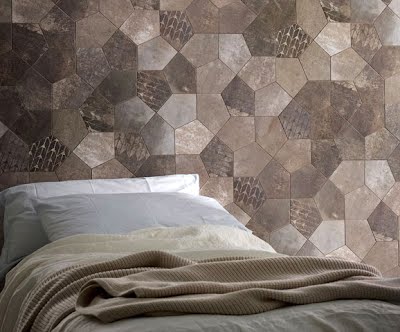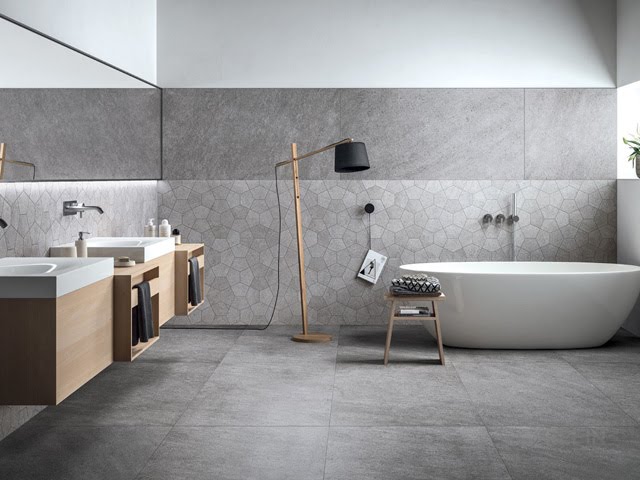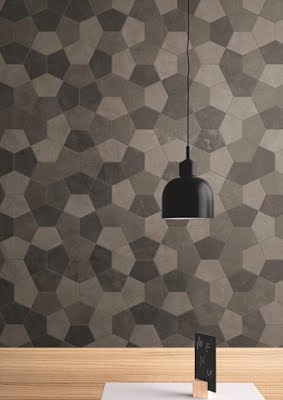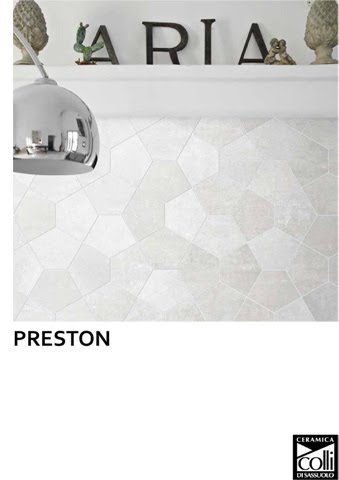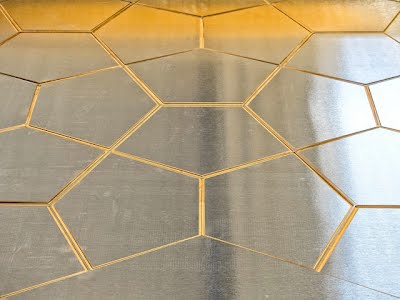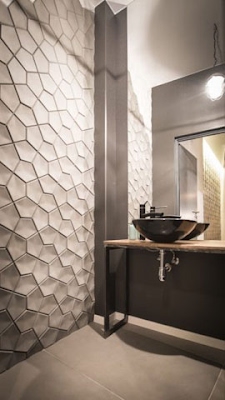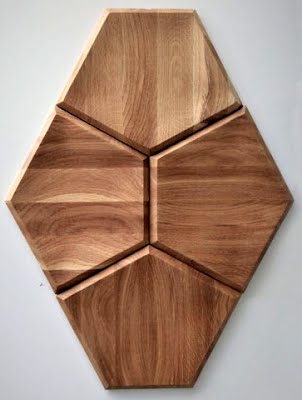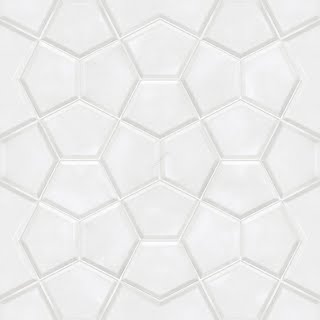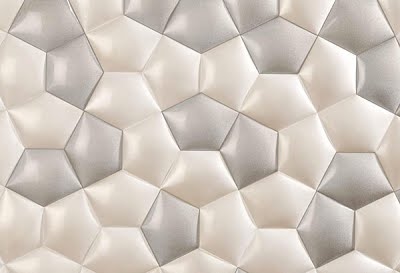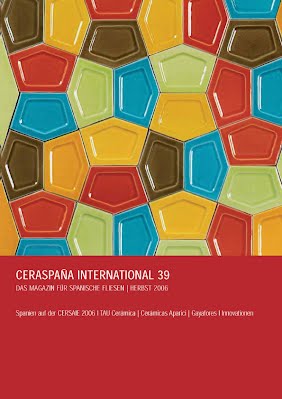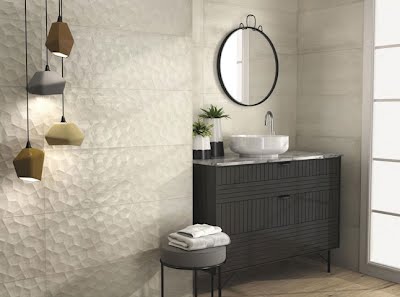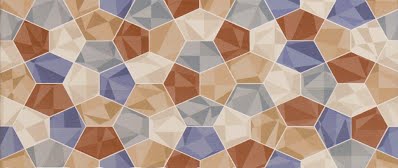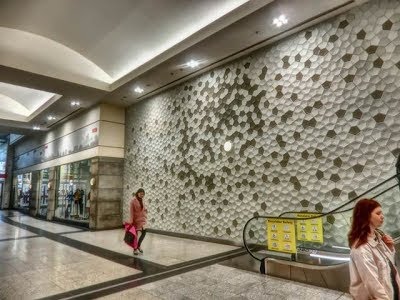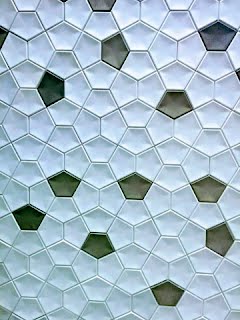The arbitrary fourth, placed in alphabetical order, of a series of four pages titled ‘Cairo Tiling As’ …, in which instances are shown as architecture, flooring, paving (exterior to Egypt) and wall tiles, with each page of a dedicated nature, with here wall tiles, or coverings, of various types. Typically, these are of a commercial nature. As such, the Cairo tiling appears, as a design, worldwide, in many forms and artefacts, in varying degrees of frequency, and of which I have collected such a listing found under my ‘Miscellaneous’ page. In short, some instances, as detailed above, are of a much more considerable nature that others, so much so that I consider these are worthy of a dedicated page, to better see the examples, without ‘distractions’. As my collection grows, I may add more categories of a dedicated nature. In short, this series of pages is to be regarded as a ‘fun’ page. For sure, matters of the in situ Cairo tiling are by far the more important. However, I have not been unduly carefree or slapdash in my investigation here, this is still undertaken to my highest standards. If any reader knows of other instances, I would be more than delighted to receive details and include on these pages. The format for each entry, in which I strive for consistency, is a follows (which has evolved and will likely continue to do so): 1. Beginning with the company name and country, I then discuss the marketing name (if any), such as Penta, or Pentax, or similar, or indeed dissimilar, amid a general discussion. Other matters, such as history, contact, is discussed elsewhere, as a separate entity. 2. Contact with the company for picture permission and background details, with picture/s, if permission has been granted. Typically, if so, I show one or more pictures. Further, the favoured format is in two aspects; first, a picture of the overall scene, to better put the paving in context with the surroundings, and then second, a detailed, close up view of the pentagons, to better view the geometry. However, this ideal is not always realisable; sometimes not both of the ideals are available, with only one or the other picture available. When picture permission is not forthcoming, the picture is omitted, with just a text entry only. However, I do not always receive a reply! Typically, the bigger the company, with branches worldwide, the less inclined they are to reply. In years gone by, upon an initial failure in response, I would try again after a definite break, upon which if no reply was received I would thus give up on the company. However, now, with time running out for me at the age of 60, I limit my enquiries to a single mail. In a sense, although galling to an investigator such as myself, a lack of response is understandable to a degree in that I am not purchasing the tiles; the information is not ‘vital’ in a commercial context! Although that said, I do indeed offer good publicity! Further, with experience gained on major companies, on occasion I think the better of it, for better or worse, and simply do not bother. If any companies reading this who have not responded, or have not been contacted and would like to correspond, I would be delighted to hear from you! 3. The year when introduced, if known, into their range, and so establishing a history. As a broad premise, the older the instance the better, although ‘old’ examples are few and far between. Typically, this is generally omitted, especially in a commercial context. In short, knowing this will permit a history of sorts, albeit of a bare minimum. As such, of most interest are older instances, loosely defined. Most of the instances seen are of recent times, in the 2000s. Of a date to define ‘early’, the 1970s, and the earlier the better! 4. Whether the Cairo connection is made. Is the manufacturer/stockist familiar with the Cairo (city) association? Typically, this is not stated, of which whether the manufacturer is aware is left open-ended and so whether the use of the Cairo tiling is purposeful or accidental, the latter in the sense of a generic pentagon tiling, is thus unknown. However, as the Cairo tiling is indeed a rare named association of a tiling, this, to me at least, gives added interest, and so ideally would be included, even if just mentioned in passing. 5. The geometry. As discussed elsewhere, the geometry can vary, from a pentagon that is a ‘near square’ to a ‘near rectangle’ and everything in between, albeit typically, the instances are of a ‘mid-range’ pentagon. On occasion, such details are to be found in the catalogue. 6. Company background. Some brief details of the company, for general interest. 7. Links to the sightings, typically of the company. 8. Acknowledgements, if a response from the company was forthcoming. The reason for this compilation is threefold, in order of importance: 1. A simple documenting of all instances, for the sake of general interest. 2. Any interested reader who desires a Cairo tiling for their home (wall or floor) can find the nearest stockist with relative ease. Of course, this is also certainly restricted to one’s home country, as otherwise the cost of shipping would be disproportionate as to the project. I make no recommendations here as to the quality of the goods offered. 3. A nod to the ‘mathematical tourist’, who upon visiting any of the towns and cities here may want to pay a visit. For obvious reasons, not all sightings here are visitable, being on private property. Although most have been sufficiently identified for this purpose, I will provide more exact details upon request (if available). In particular, I would like to add to my collection where photo permissions have been refused. Do send me something if seen on your travels! A collection of instances of wall tiles, invariably of a commercial nature, mostly ceramic tiles, mostly used as interior design, such as bathrooms and kitchens. Quite how best to order these is subject to review. As a broad statement, these are commercial products, with the company, if of a large concern, typically exporting worldwide. Should it be placed under the country of the manufacturer, or where so found? There are pros and cons to both. For now at least, I place under the country of installation. As such, it is not always a straightforward task as may otherwise be thought to attribute a certain tile to a specific company and thus country of origin! In short, some companies seem to stock other companies tiles! For instance, the Tileworks company of Northern Ireland market ‘Pentax’, also marketed by HRG Heragi. Bedrock tiles market ‘Penta’, also by HRG Heragi! And they in turn…? Therefore, at times, considerable confusion and doubts arise. I can only do my best, with details here to be presumed as correct as can be. For those who are intending a home DIY project, or indeed, of just general interest, note that floor and wall tiles are not interchangeable, as previously, I believe, I once thought. There are important differences; indeed, there is a whole lot more to this than I thought! Tiledevil.co.uk has compiled a good, succinct guide, of which I excerpt below: What's the Difference between Floor Tiles and Wall Tiles? Tiles intended only for use as wall tiles are often lighter and thinner than floor tiles. The glazes used in the manufacture of a wall tile are also different to those used for floor tiles, and are not designed to resist abrasive forces from foot traffic. Different tiles can be made from different types of clay and different types of glaze. Tiles produced exclusively for walls are inherently not intended to be load bearing. Floor tiles can of course be installed on a wall; however, they will still be referred to as "floor tiles". Many of our 30 x 60 tiles, for example, are floor tiles, but more often than not they're installed on bathroom walls. But they are still referred to as floor tiles. Who Decides Which are Which? An independent rating system classifies ceramic and porcelain tiles according to their strength and durability. The Porcelain Enamel Institute rating (PEI rating) of tiles is a measure of how much wear and tear a tile can take: Group 0: These tiles are unrated, and are only suitable for use on walls. Group I: These tiles are suitable only for areas of very light traffic, where shoes are unlikely to be used, such as an upstairs’ ensuite. The surface of the tile could be easily marked or scratched by only a small amount of harsh treatment. Group II: Areas of the home which are not exposed to the highest levels of traffic, or not likely to come into contact with significant quantities of dirt or other abrasive materials. So the hall and kitchen would not qualify here, but a living room and bathroom would. Group III: Any residential area, or indeed some light commercial areas, where the presence of abrasive dirt etc. is not excessive. Group IV: Any residential area, commercial areas such as restaurants, exhibition areas, hotel rooms, showrooms, where there may be significant traffic. Group V: Substantial or very heavy traffic, such as shopping centres, commercial entrances, hotel lobbies, and industrial workplaces. Theses tile are generally more expensive than tiles in the other categories. Any tile that is unrated or fails to qualify for even a Class I rating is referred to as a “wall tile”. Wall tiles must only be used on walls. Floor tiles (any tiles that have achieved a Class I – Class V rating) are made from materials that are suitable for installing on the floor. The glaze is super durable, and they're up to 20% heavier than wall tiles. In summary: Wall tiles are suitable for walls only - floor tiles can go on either. The Difference between Wall and Floor Tiles, and Style: Due to the impervious or vitreous nature of ceramic and porcelain tiles, and the hardened glaze which is usually fired onto their top surface, tiles are normally found in bathrooms, wet-rooms, and kitchens. At a minimum, hand-basins and the area around bathtubs should have a tiled backsplash of wall tiles. This is to prevent water damage to painted plaster surfaces in a home. Many styles of wall tiles are presented with a high gloss finish. Due to the slip risk, it’s less common to find high gloss tiles on bathroom floors. It’s more common to find wall tiles with decorative embellishments than is the case for floor tiles. Coloured bands, trims, borders, and listellos (often featuring mosaics) are sometimes embedded within wall tile installations. The mosaics might contain a blend of small pieces of polished travertine, mother of pearl, glass, and brushed aluminium. The purpose is purely decorative, and to eliminate any visual monotony of a large, unicolour wall. This looks great in an expensive installation with floor-to-ceiling tiling. The Listing The countries include Australia (3), China (6), Finland, France, Germany, India (2), Italy (6), Israel, Malaysia, Poland (2), South Africa, Spain (5), Turkey, United Kingdom (4), and United States (3). Australia (1 of 3), Melbourne, of Metz Tiles Company Metz Tiles, of Australia, who describe themselves as a ‘Specialty Ceramic Tiles’ company have among their ‘Sirocco’ range a series of six Cairo tile instances, all titled ‘Penta’, with Acciaio, Crema, Fango, Ghiaccio, Grafite, and Sabbia. These are all of a like premise, of minor colour variations No mention of the connection as to the Cairo association is made on the site, and so whether the use of the Cairo tiling is purposeful or accidental, the latter in the sense of a generic pentagon tiling is unknown. Likely they are unaware of this. The date of instigation is unknown. Upon an August 2019 request for background detail of the reasons for the choice of tile and photo permissions, they did not respond. Company Background Metz was founded in 1953 as a small factory in Melbourne by Phillip Metz. Its focus then was heavy duty industrial flooring and specialty corrosion resistant cements for use in chemical plants, power stations etc. Metz has subsequently supplied and/or installed more commercial kitchen floor tiling systems than any other company in Australia. Today Metz remains proudly Australian owned by the Ellis brothers, Stuart and Ian. The traditional industrial business continues to thrive, with an emphasis on export markets. Metz has expanded significantly since its early days in the suburbs of Melbourne, with three Australian branches, an office in the Middle East and Ceramic tile Design Galleries in Melbourne, Brisbane, Sydney and Perth. They encourage you to come and visit these Design Galleries. Ian and Stuart took over the Metz Business from their father James in 2009. James had bought the business way back in 1986. The brothers share responsibilities for running Metz’s operations. Ian is based in Sydney and Stuart in Brisbane. http://metztiles.com.au/products/sirocco-penta-acciaio/ Links to the other titles are below the page above. http://metztiles.com.au/wp-content/uploads/2018/04/METZ_Sirocco.pdf The tiles in situ. Australia (2 of 3), of Woven Image Company Woven Image, of Australia, who describe themselves as ‘Global suppliers of sustainable, high performance textiles and stylish interior solutions’, market the Cairo tiling in a variety of formats, such as wall coverings, acoustic tiles, ceiling, upholstery, screens, and space divisions. Without any doubt, they have a decided interest in the Cairo tiling! These are marketed under the brand names Mura, Penta and EchoPanel, albeit not all are tiles in the normal sense. Further, they appear to have entered into partnerships/arrangements with other people (designers) and companies (such as Bang Design), so much so that what can truly be sourced to then is unclear. It’s a nightmare to unravel, and of which I thus attempt to do so to an ‘appropriate’ degree - one could spend many hours on this without much additional clarity resulting. They have an extensive website. It is unknown when the Cairo tiling was introduced into their range. No mention of the connection as to the Cairo association is made on the site, and so whether the use of the Cairo tiling is purposeful or accidental, the latter in the sense of a generic pentagon tiling is unknown. Likely they are unaware of this association. Upon two previous requests for background detail of the reasons for the choice of tile and photo permissions, they did not respond. Company Background Woven Image was established in 1987 after identifying a strong need for design-driven textile products (no one person or persons are identified). They now service a global network of designers and architects in over 15 countries with head offices in Australia, Hong Kong, Singapore and Shanghai. They specialise in innovative, contemporary and sustainable textiles and vertical finishes. Their range of products serves the corporate, government, hospitality, transport and healthcare industries. https://www.wovenimage.com/penta-tile.html https://www.modlar.com/brands/woven-image/woven-image-echo-panel-mura-maze/ https://www.wovenimage.com/brands/mura/mura-6m/mura-glow-6m.html https://www.indesignlive.sg/products/woven-image-scale-ling-new-heights Australia (3 of 3), Sydney, of Stone Concepts Oz Company Stone Concepts Oz, of Sydney, Australia, is a relatively small company who describe themselves as ‘stocks only the highest quality natural stone finishes and the latest styles’. From this, they are thus best described as suppliers rather than manufacturers, as the stone is outsourced from India. They have a website but is not searchable. They market the Cairo tiling as both wall and floor tiles simply titled ‘Pentagon Series’, in stone, although there is only the one pentagonal (Cairo) tiling in their range. This is available in three colour variations, Himachal Black (black slate quarried in India), Silver and Copper. It is not known when the Cairo tiling was introduced into their range. No mention of the connection as to the Cairo association is made and so whether the use of the Cairo tiling is purposeful or accidental, the latter in the sense of a generic pentagon tiling is unknown. Likely they are unaware of this association. The angles and dimensions of the tile are not known, although the thickness is, of 11 mm and 18 mm (likely of wall and floor respectively). I did not contact the company, judged that they would likely not respond, fairly or unfairly, to a foreign, non-commercial query. Company details and background Stone Concepts Oz has been designing, supplying and manufacturing their exclusive range of natural stone finishes from a variety of countries around the world for over 20 years. They have a facility in India where they manufacture and supply globally to five countries. However, much detail is not known; there are no named people, with the size, the number of employees and turnover all not stated. There are no other relevant details. https://www.stoneconceptsoz.com.au/pentagon-series.html https://www.stoneconceptsoz.com.au/images1/pentagon-1-4.png (detail) China (1 of 7), Quanzhou Fujian, of Fansolic Company Fansolic, a subsidiary of Newstar Stone, is a major China company who describe themselves as supplying stone materials, of all types, from all around the world. They have an extensive website, in English. They market the Cairo tiling in a variety of formats, such as wall and floor tiles (along with other uses), in marble, simply titled ‘pentagon’. There are four versions, albeit of a like nature. Although not stated explicitly, it seems the Cairo tiling was introduced into their range beginning in 2013, with further additions in 2014, 2015 and 2016. No mention of the connection as to the Cairo association is made on the site, and so whether the use of the Cairo tiling is purposeful or accidental, the latter in the sense of a generic pentagon tiling is unknown. Likely they are unaware of this association. I did not contact the company, judged that they would likely not respond, fairly or unfairly, judged a major foreign conglomerate, with a subsidiary company, with no obvious point of contact of a non-commercial query. Company details and background Fansolic is a brand company belong to Newstar stone, in Quanzhou Fujian, China, with a history of more than 20 years. They are the fastest developing stone enterprises in China, exporting stone, quarry mining, processing, manufacturing and project construction. Their main markets are the United States, Canada, and Australia. Geographically, Quanzhou, alternatively known as Chinchew, is a prefecture-level port city on the north bank of the Jin River, beside the Taiwan Strait in Fujian Province.http://www.fansolic.com/pentagon/ China (2 of 7), of Venado Company Venado is a relatively small China company who describe themselves as mainly exporting handmade tile, mosaic tile and customized design to Australia, Korea, USA, and the Philippines. A feature is that of their handcrafted nature. They have a website, in Chinese and English. They market the Cairo tiling as wall and floor tiles simply titled ‘pentagon hand made tiles’. There are two broadly alike versions, one only suitable for wall and another for walls and floors. The tiles have a curious mottled texture, available in a variety of colours. It is not known when the Cairo tiling was introduced into their range, although as the company began in 2015, it is thus obviously recent. Oddly, I cannot find the tiling on their webpage, but only through their presence on AliExpress, an e-commerce platform somewhat similar to eBay. No mention of the connection as to the Cairo association is made on either of the two sites and so whether the use of the Cairo tiling is purposeful or accidental, the latter in the sense of a generic pentagon tiling is unknown. Likely they are unaware of this association. I did not contact the company, judged that they would likely not respond, fairly or unfairly, to a foreign, non-commercial query. Company details and background Established in 2015, Venado Tiles mainly exports handmade tile, mosaic tile and customized design to Australia, Korea, USA, and the Philippines. There are no other relevant details. Geographically, the city or town where they are based was not established. https://www.aliexpress.com/item/33046550542.html?spm=2114.12010615.8148356.2.28f31a6eQy0e2F https://www.aliexpress.com/item/32956697352.html?spm=2114.12010615.8148356.8.28f31a6eLtwCdD China (3 of 7), Quanzhou, of Quanzhou Guanpeng Trading Company Quanzhou Guanpeng Trading Co. is a major China company (with a billion US dollar turnover) who describe themselves as both manufacturing and supplying tiles, wall and floor, of all types, such as ceramics, terra cotta, and others. They have a presence on the Hi-Supplier business-oriented website, in English. Their main markets are Asia, Africa, Middle East, South America and many other countries. They market the Cairo tiling as wall tiles only (not floors), oddly titled ‘Star Shaped Design Pentagon’. There are seven versions, albeit of a like nature, broadly differentiated by colour and a mottled appearance. It is not known when the Cairo tiling was introduced into their range, but seeing as the company began in 2004, it is obviously relatively recent. No mention of the connection as to the Cairo association is made on the site, and so whether the use of the Cairo tiling is purposeful or accidental, the latter in the sense of a generic pentagon tiling is unknown. Likely they are unaware of this association. I did not contact the company, judged that they would likely not respond, fairly or unfairly, judged a major foreign conglomerate, with no obvious point of contact of a non-commercial query. Company Background Quanzhou Guanpeng Trading Co. is in Quanzhou (City), Fujian (State), China, began in 2005. No other relevant detail is given. Geographically, Quanzhou, alternatively known as Chinchew, is a prefecture-level port city on the north bank of the Jin River, beside the Taiwan Strait in Fujian Province. China (4 of 7), Guangdong, of KST Building Materials Co. Ltd KST Building Materials Co. Ltd. of Guangdong, Jiangmen, China, is a major company who describe themselves as a manufacturer of glass mosaic tiles, for wall and floor, of all types, such as ceramics, and others. They have a presence on the Alibaba business-oriented website, in English. They market the Cairo tiling as both wall tiles and floors (although only pictured as wall tiles) titled ‘Pentagonal custom decorative floor motif ceramic tile’. The base of the tile measures 115mm, with sides of 110mm. There is a single instance, in five colours, without any interior decoration. It is not known when the Cairo tiling was introduced into their range, but seeing as the company began in 2016, it is thus recent. No mention of the connection as to the Cairo association is made on the site, and so whether the use of the Cairo tiling is purposeful or accidental, the latter in the sense of a generic pentagon tiling is unknown. Likely they are unaware of this association. I did not contact the company, judged that they would likely not respond, fairly or unfairly, judged a major foreign conglomerate, with no obvious point of contact of a non-commercial query. Company details and background KST (the acronym is unresolved) is based in Guangdong. It is not entirely clear when they began; one account gives 2002 and another 2016. They employ 201-300 people, with a 2.5 Million-5 Million US dollar turnover. Their main markets are Africa and Asia. No other relevant detail is given. Geographically, Guangdong is a coastal province in South China on the north shore of the South China Sea. The capital of the province is Guangzhou. Jiangmen is a prefecture-level city. China (5 of 7), Guangdong, Foshan, Xinbotao Ceramics Co. Ltd. Xinbotao Ceramics Co. Ltd, of Guangdong, Foshan, China, is a major company who describe themselves as a manufacturer of ceramic mosaic, glass mosaic, metal mosaic, outside wall, floor tiles, rustic tiles and others. They have a website as well as a presence on the Alibaba business-oriented website, both in English. I could only find the tiling on the Alibaba site. It is not entirely clear if they market the Cairo tiling, branded under the ‘Symport’ range, as a wall or floor tile, or both. However, given that they are only 6mm thick, it would appear they are wall tiles only. The tiles are titled ‘white pentagon irregular glazed ceramic mosaic tile’ (available in five colours) and a 3D version ‘3d white colors pentagon shape ceramic mosaic wall tile’ (available in three colours). Within this are a variety of interior designs, of plain color and a mottled effect. It is not known when the Cairo tiling was introduced into their range, but seeing as the company began in 2014, it is thus recent. The angles and dimensions of the tile are not known. No mention of the connection as to the Cairo association is made on the site, and so whether the use of the Cairo tiling is purposeful or accidental, the latter in the sense of a generic pentagon tiling is unknown. Likely they are unaware of this association. I did not contact the company, judged that they would likely not respond, fairly or unfairly, judged a major foreign conglomerate, with no obvious point of contact of a non-commercial query. Company details and background Xinbotao Ceramics Co. Ltd, of China, is based in Guangdong, Foshan, beginning in 2014. They employ 51-100 people, with a US$1 Million-US$2.5 Million revenue. Their main markets are North America 15%, Mid East 13%, and South Asia 10%. No other relevant detail is given. Geographically, Foshan is a prefecture-level city in central Guangdong Province, China. China (6 of 7), Xiamen, Fujian, of Caron Stone Co., Ltd Caron Stone Co., Ltd of Xiamen, Fujian, China, is a company who describe themselves as a manufacturing and exporting of ledge stones (see below) and mosaics. They have a website in English and is searchable. They market the Cairo tiling as both a wall or floor tile. The tiles are titled ‘High quality Marmara Equator white marble pentagon stone mosaic tilestone mosaic’. The formation, size, and turnover of the company are not known, and so consequently it is not known when the Cairo tiling was introduced into their range. The angles and dimensions of the tile are not known, although the thickness is, of 7mm and 10mm. No mention of the connection as to the Cairo association is made on the site, and so whether the use of the Cairo tiling is purposeful or accidental, the latter in the sense of a generic pentagon tiling is unknown. Likely they are unaware of this association. I did not contact the company, judged, fairly or unfairly, that they would likely not respond to a non-commercial query of foreign origin. Company details and background Caron Stone Co., Ltd is based in Xiamen, Fujian, China. However, beyond that, there is little more relevant detail to add! As discussed above, their formation, size and turnover are not known. Their speciality is ledge stones, of which, I must admit, I was unaware of the term! Upon research, in its most basic sense, ledge stone is a pattern of stonework using horizontal joints. The pattern is typically made up of individually stacked pieces of stone where the horizontal ledge is more defined than the vertical joins. The term is widely used in the industry. Further, Marmara Equator is a white and grey marble with distinctive linear veins quarried in Turkey. This stone is especially good for wall and floor other typical purposes. Geographically, Xiamen is a port city on China’s southeast coast, across the strait from Taiwan. Fujian is a province known for its mountains and coastal cities. http://www.caronstone.com/product/High-Quality-Marmara-Equator-White-Marble-Pentagon-Stone-Mosaic-Tilestone-mosaic-Brick-Pattern-Marble-Mosaic-Tile-Marmara-Hexagon-Marble-Mosaic-Tile.html China (7 of 7), Xiamen, of Xiamen Just Stone Co., Ltd. Xiamen Just Stone Co., Ltd, of Xiamen, Fujian, China, is a company who describe themselves as a ‘large scale stone business company and quarry owner, factory, importer, and exporter’. They have a presence on the web portal Stone Contact site, in English. They market the Cairo tiling, as a ‘Mosaic Tile for Hotel, Kitchen, Bathroom Decoration’. It is not clear if this as a wall or floor tile, or possibly with dual-use. The tiles are not titled with a trade name as such, but rather by a letter and number description (as with others in their range), namely W42. The stone is of Grey Foussana Limestone, a kind of grey limestone quarried in Tunisia. It is not known when the Cairo tiling was introduced into their range. The angles, dimensions and thickness of the tile are not known. No mention of the connection as to the Cairo association is made on the site, and so whether the use of the Cairo tiling is purposeful or accidental, the latter in the sense of a generic pentagon tiling is unknown. Likely they are unaware of this association. I did not contact the company, judged, fairly or unfairly, that they would likely not respond to a non-commercial query of foreign origin. Company details and background Xiamen Just Stone began in 2004, and have 5-50 employees. They have quarries in Tunisia, Iran, India and China, and with precision-manufacturing and beautifully finishing they meet all international standards, specifications and tolerances. They are well known for selling high-quality stone blocks from around the world in China. Geographically, Xiamen is a port city on China’s southeast coast, across the strait from Taiwan. Fujian is a province known for its mountains and coastal cities. https://www.stonecontact.com/products-534101/mosaic Finland, Vantaa, of Laattakeskus Company Laattakeskus of Vantaa, Finland, is a company who describe themselves as a ‘Specialty store for wall and floor tiles’. It would appear that they are suppliers rather than manufacturers. They have a website in both Finnish and English and is searchable, and a minor presence on Facebook. They market the Cairo tiling as both a wall and floor tile in three colour versions, accordingly titled ‘Pentagon Grey’, ‘Pentagon Light Grey’ and ‘Pentagon White’, imported from Indonesia. The Cairo tiling was introduced into their range in 2019. The angles and dimensions of the tile are not known, although the thickness is 10mm. No mention of the connection as to the Cairo association is made on the site, and so whether the use of the Cairo tiling is purposeful or accidental, the latter in the sense of a generic pentagon tiling is unknown. Likely they are unaware of this association. I contacted the company for further details, but they did not respond. Company details and background. The formation date, size, and turnover of the company are not known. I was not able to discern any relevant details! Geographically, Vantaa, population 228,678 (2019) is a city and municipality in southern Finland. It is part of the inner core of the Finnish Capital Region along with Helsinki, Espoo, and Kauniainen. Vantaa has a rich history that dates back to the stone age. https://www.laattakeskus.fi/en/home/2691-pentagon-white-150x100-mm-kivimosaiikki.htm https://www.laattakeskus.fi/en/home/2692-pentagon-grey-150x100-mm-kivimosaiikki.html https://www.laattakeskus.fi/en/home/2693-pentagon-light-grey-150x100-mm-kivimosaiikki.html France, Normandy, of Normandy Ceramics Normandy Ceramics, of Normandy, France is a seemingly small, artisanal company who describe themselves as ceramic tile manufacturers. They have an extensive website in French, with an English option only, but is not searchable, as well as a social media presence, with Facebook and Twitter. They market the Cairo tiling seemingly for wall tiles only (and pictured as such). The Cairo tiling is titled, among their collection range, as ‘Cairo Pavers’ and so they are aware of the City connection, although the connection is not described in any great detail, with simply ‘paved from Cairo’, and nothing more. It is seemingly available in nearly 150 (sic) colours. The angles and side lengths are not stated (albeit given as height and width in the specifications), although the thickness is, of 10 mm. It is not known when the Cairo tiling was introduced into their range. For once, for the mathematical tourist, I have exact details of the locations of two installations, both seemingly possible to visit, or at least ask to enquire first. Both are in Paris: 1. Wayo - School of Traditional Dietetics and Japanese Cuisine, seemingly a restaurant 2. Keeze House, seemingly a hotel, near the Champs-Elysées. I contacted the company, and although received an initial helpful reply from Bertrand Foucher, promising pictures upon contact with the designer, this has not been forthcoming. Geographically, Normandy (originally from the word for ‘Northman’ in several Scandinavian languages) is the northwesternmost of the 18 regions of France, roughly referring to the historical Duchy of Normandy. The region does appear to have any ceramics or tile industry. Company details and background Normandy Ceramics, founded in 1960, is based in Normandy. They boast an artisanal approach, with likely a small number of employees; Linked In gives four. The founder’s name is not given. No other relevant detail is given. https://www.normandy-ceramics.com/catalogue/pave-du-caire/restaurant-wayo--paris-135.html https://www.normandy-ceramics.com/catalogue/collections/paves-du-caire-136.html https://www.normandy-ceramics.com/catalogue/realisations/bureaux--paris-196.html France Stockists Greycale Germany, Wermelskirchen, of OBI Company OBI, of Wermelskirchen, Germany, is a major company who describe themselves as a home improvement and DIY store. They are the largest DIY retailer in Europe, and the third-largest in the world, behind The Home Depot and Lowe's. That said, it was only during this research that I had heard of them (and for that matter Lowe’s too) - they are unknown in the UK! They have an extensive website in German which auto translates into English and is searchable. They market the Cairo tiling as wall tiles only, distributed widely around Germany and eastern Europe, with 650 stores. Germany has 354 stores, with Italy the next, with 56 stores but oddly none in the UK or France! The Cairo tiling is titled, curiously, as ‘Berlin Penta’. It is available in three colours: black, grey and white. The angles and side lengths are not stated, although the thickness is, of 9mm. It is not known when the Cairo tiling was introduced into their range. Oddly, I could not find any reference to the tiling on the native German site, but rather it was initially found on an Italian site! Searches for ‘Berlin’, ‘Penta’ and the German translation for wall tiles ‘Wandfliesen’ proved fruitless. But it must surely be there! Pictures are at a premium, and only show close up detail, rather than as an actual wall tile in context with the surroundings. Given the widespread nature of the company, one would expect the tiles to feature in many homes, not just in Germany, but if so I have not seen any. No mention of the connection as to the Cairo association is made on the site, and so whether the use of the Cairo tiling is purposeful or accidental, the latter in the sense of a generic pentagon tiling is unknown. Likely they are unaware of this association. I did not contact the company, judged that they would likely not respond, fairly or unfairly, judged a major foreign concern, with no obvious point of contact of a non-commercial query.
OBI was founded by Dr Emil Lux and Manfred Maus, in 1970. Although an explanation of the name is given on the website, this is lost in translation. It belongs to the Tengelmann Group. Today it is a multinational company that employs over 43,000 employees worldwide, achieves a turnover of 6.7 billion euros with a total sales area of over 4.3 million square meters in the 11 countries where it is present with its own brand. No other relevant detail is given. India (1 of 2), Mumbai, of NITCO company Quite what the title NITCO represents is unclear - an acronym? It is unknown when the Cairo tiling was introduced into their range, but given that all three versions have as a description ‘new’ (of this year?), it is thus obviously a new incorporation, of recent years, rather than ‘old’, dating back to the beginning of the company, in 1957. No mention of the connection as to the Cairo association is made on the site, and so whether the use of the Cairo tiling is purposeful or accidental, the latter in the sense of a generic pentagon tiling is unknown. Likely they are unaware of this. Upon an August 2019 request for background detail of the reasons for the choice of tile and photo permissions, they did not respond. Company Background NITCO, established in 1953 by Mr. Pran Nath Talwar, is among the top premium tile companies in Mumbai, India. Its pan-India presence is facilitated through 22 offices. Its strong distribution network comprises more than 1100 direct dealers as well as exporting tiles to countries like Belgium, The Netherlands, Muscat, Saudi Arabia, Bahrain, Qatar, Oman and other European and African countries. They make and market both wall and floor tiles. http://nitcotiles.in/productdetails?search-penta_penta--arcus-decor_WTL032HLL12205 http://nitcotiles.in/productdetails?search-penta_penta-roze-decor_WTL032HLL12105 http://nitcotiles.in/productdetails?new-launch_penta--verde-decor_WTL032HLL12305 Orion Variation http://www.nitcotiles.in/productdetails?grandeur_orion_TLN033GRD1904 India (2 of 2), Rajasthan, of Rajdhani Marble & Tiles Company Rajdhani Marble & Tiles, of Vishwakarma Industrial Area, Jaipur, Rajasthan, India, describe themselves as a manufacturer and supplier of ‘Sand Stone, Lime Stone, Tiles & Slab, Marble & Granite, Elevation Stone’. They market the Cairo tiling as marble stone in two varieties, ‘white pentagon’ and ‘small pentagon’, stated as dual-purpose wall and floor tiles. This is marketed on IndiaMART, India's largest online marketplace. Each page has the a bare minimum of detail, restricted to product detail and commercial matters. It is unknown when the Cairo tiling was introduced into their range. Upon an August 2019 request for background detail of the reasons for the choice of tile and photo permissions, they did not respond. No mention of the connection as to the Cairo association is made on the site, and so whether the use of the Cairo tiling is purposeful or accidental, the latter in the sense of a generic pentagon tiling is unknown. Likely they are unaware of this association. Company Background Rajdhani Marble & Tiles, under the leadership of Mohan Kumawat, the CEO, began in 2013. They can be described as a small business, employing 11-25 people. There is little other detail. Italy (1 of 6), Faenza, of Gigacer Ceramics Company Gigacer, a major Italian ceramics company based in Faenza (of historical significance as to pottery, detailed below), has used the Cairo tiling in two ways, as flooring and wall coverings. (As this is a dual-aspect sighting, the former is also discussed on the ‘As Flooring’ page.) These are marketed under the ‘Argilla’ range. The instigation and reason for the selection of the Cairo tiling are unknown. Likely, this is ‘modern’, loosely defined; I have seen these marked at a presumed trade fair, of 2015, and appears to have been launched in 2016. The tiles are made from quartz. I have not been able to find any reference to the Cairo tiling on the company's site, or on related architecture sites, where they feature quite heavily. However, the angles 123° (2), 90° (2), and 114° are indeed given, as well as the lengths, with a base of 490mm, and sides of 842mm. Company Background The company history is not well documented, and is of generalities, with a short entry and without a beginning date. Gigacer was born in Faenza, the cradle of ceramics and cutting edge of industrial and crafting production technology in ceramic materials. This territory contains the right environment and skills necessary to develop an innovative project in this industry, following the most strict regulations on quality and environment preservation. Experience and technological innovation merge into a new way of producing ceramic tiles: flexible, with high quality and oriented to satisfy an everyday more demanding market. This is our mission, the mission of a modern and innovative company, definitely Made in Faenza. Faenza details, from Wikipedia: Faenza is an Italian city and comune, in the province of Ravenna, Emilia-Romagna, situated 50 kilometres southeast of Bologna. Faenza is home to a historical manufacture of majolica-ware glazed earthenware pottery, known from the name of the town as faience. https://www.architonic.com/en/product/gigacer-argilla-biacca-material-pentagon-large/1476424 Italy (2 of 6), Sassuolo, by Marca Corona Ceramics Company http://www.halmannvella.com/wp-content/uploads/2018/05/Newluxe_HalmannVella_MarcoCorona.pdf See pages 5-7, 23, and 27 Marca Corona is a major Italian ceramics company based in the (famed) Sassuolo district (discussed below), with a long-standing history, producing designer Marca Corona tiles and porcelain stoneware since 1741, and is, perhaps not unexpectedly, the oldest ceramics company in the Sassuolo district. The Sassuolo district produces eighty per cent of all ceramic tiles in Italy, with more than 300(!) ceramic factories operating. The city is currently the centre of the Italian tile industry in the world. Since 1982, it has been part of Gruppo Concorde, the main European ceramics group that is wholly Italian owned. Marca Corona has made a name for itself in the top segments of the international market as a lively advocate of Italian style throughout the world. It has a museum on-site, which can be visited by appointment: https://www.ceramica.info/en/articoli/the-marca-corona-museum/ Background details on the Cairo tiling here are sketchy, I have not been able to find this on their website, although others seemingly have! The catalogue serves admirably though. It appears to have been instigated in 2015 at a Cersaie 2015 exhibition (the world’s largest exhibition of ceramic tile and bathroom furnishings), possibly titled New Luxe, which included other tiles. No mention of the connection as to the Cairo association is made in the catalogue (and presumably the site too), and so whether the use of the Cairo tiling is purposeful or accidental, the latter in the sense of a generic pentagon tiling is unknown. Likely they are unaware of this. Italy (3 of 6), by Anna Zirbi? A somewhat odd occurrence as to the company, designer and marketer are to be found on the Italian site ‘Tilelook’. Various names or titles are given that are seemingly associated with this instance, namely, Dom Ceramiche, Anna Zirbi, and Tonello Alberto. However, only one, Dom Ceramiche, who is an established Italian company, is verifiable. However, I cannot find this in their range. Anna Zirbi appears to be the designer, but save for that, I have no further details on her, but, who, or, what, or are ‘Tonello Alberto’ is unclear; it could be a range, company (unlikely) or person! Further, Tilelook appears to be the only source of the tiling. It is all most mysterious! Even much of Tilelook is obscure! They appear to be Italian based, describing themselves as ‘the interior design and tile marketplace’. Tilelook appears to be a ‘tile library’ of sorts, although much here remains unclear. From their website: Tilelook enables end users to browse a library of over 60,000 authentic flooring, covering and furniture products which includes room types such as bathroom, kitchen or living room. However, to search the site one has to seemingly subscribe. There are other oddities here that I pass over. As alluded to above, there is the bare minimum of detail on the tiling itself, with just the designer, type, style, city and date given (Anna Zirbi, bathroom, modern, Campo San Martino - Italy, 2016)! Although I presume this is an actual artefact, with computer renderings that sometimes serve for display purposes, I cannot be sure. https://www.tilelook.com/en-GB/users/anna-zirbi/projects/tonello-alberto-bc89766f-0675-48c1-9373-50349a3cf61d https://www.tilelook.com/en-GB/users/giampaolo-mosciatti/projects/masiero-silvia-grande-8b02a878-b23c-4f8f-b3c8-59d7fb899327 https://www.tilelook.com/en-GB/users/anna-zirbi/projects/modesto-tosetto-bagno-p-t Italy (4 of 6), Modena, of Pastorelli Company Pastorelli, of Modena, Italy, describe themselves as ‘in the construction of floor and wall tiles’. They have a website, in Italian as well as English, French and German. They market the Cairo tiling as porcelain stoneware, wall and floor tiles, simply titled ‘Vanguard Pentagono’ in three versions, ‘light, rust, and smoke’. The tiles are of two types, ‘plain’ and with a secondary design of chevrons of sorts, which seems somewhat odd. It is not known when the Cairo tiling was introduced into their range. No mention of the connection as to the Cairo association is made and so whether the use of the Cairo tiling is purposeful or accidental, the latter in the sense of a generic pentagon tiling is unknown. Likely they are unaware of this association. The side lengths and angles are not detailed. Presumably one can order direct from the company, but another supplier is Sorgente s.r.l. I did not contact the company, judged that they would likely not respond, fairly or unfairly, to a foreign, non-commercial query. Company details and background Pastorelli, founded in 1967, today boasts an experience of over 40 years in the construction of floor and wall tiles. Productively active in the two factories of Savignano sul Panaro, Pastorelli was one of the first companies to produce gres porcelain in the 90s, becoming a reference in the field for creativity and product innovation. I was not able to establish the people involved or the size, but they appear to be a large concern. http://www.pastorellitiles.com/ http://www.afoideli.gr/images/productpdf/cat.%20vanguard.pdf Italy (5 of 6), Casalgrande, of Refin Ceramiche Company Refin Ceramiche, of Casalgrande, Italy is a major company who describe themselves as an ‘innovative tile company’, offers a wide range of Italian porcelain tiles and Italian ceramic floor tiles. They have an extensive website in Italian and an impressive seven other languages(!), and a like social media presence on Facebook. They market the Cairo tiling at least as wall tiles and possibly floors too (although only pictured as wall tiles) suitable for the bathroom. Unfortunately, this is titled in a most confusing way, with a variety of names, of varying degrees of depth. As best as I can make out, this is titled ‘Penta’ in the ‘Greycale’ range, also subtitled ‘Breezy Charme’ (sic). Another instance is ‘Mosaico Penta Soft’. It is available in six colours, or more exactly shades: Ghiaccio – ice, Acciaio – steel, Grafite – graphite, Fango – gray-brown, Sabbia – sand, and Crema – beige) without any interior decoration. The angles, side lengths and are not known, although the thickness, is, of 9.5 mm. This relatively thin tile thus presupposes wall tile use only. Although not stated as such, the pentagon can be seen to be equilateral. It is not known when the Cairo tiling was introduced into their range, but is likely relatively recent, as it was exhibited at the Cersaie trade event in 2017, rather than at the inception of the company, in 1962, detailed below. No mention of the connection as to the Cairo association is made on the site, and so whether the use of the Cairo tiling is purposeful or accidental, the latter in the sense of a generic pentagon tiling is unknown. Likely they are unaware of this association. I did not contact the company, judged that they would likely not respond, fairly or unfairly, judged a major foreign conglomerate, with no obvious point of contact of a non-commercial query. Company details and background Refin Ceramiche has been a presence on the international market since 1962 with an ever-increasing assortment of high-quality floor and wall tiles, all at the forefront of design. From 1995 Refin Ceramiche has specialised in the production of porcelain stoneware and from 1998 has consolidated its market leadership in Italy by joining the Concorde Group (Gruppo Concorde), Europe's second-largest tile producer in terms of turnover, with over 2,000 staff and 12 production sites in Italy and abroad. The founder’s name is not given. No other relevant detail is given.
https://www.refin-ceramic-tiles.com/series/grecale/ Italy (6 of 7), Casalgrande, of Casalgrande Padana Company Casalgrande Padana, of Casalgrande, Italy is a major company who describe themselves as producer of glazed stoneware products. They have an extensive website in Italian, with English, French and German options and a like social media presence on Facebook, although their site is not particularly conducive to viewing. They market the Cairo tiling for both wall tiles and floors (although only pictured as wall tiles). This is titled ‘Mosaico Penta’ in the ‘Resina’ range, available in three colours, light brown (Tobacco), dark brown (Havana), and black (Black). The angles, side lengths and are not known, although the thickness is, of 11 mm. This relatively thin tile thus presupposes wall tile use only. Although not stated as such, the pentagon can be seen to be (almost certainly) equilateral. It is not known when the Cairo tiling was introduced into their range. No mention of the connection as to the Cairo association is made on the site, and so whether the use of the Cairo tiling is purposeful or accidental, the latter in the sense of a generic pentagon tiling is unknown. Likely they are unaware of this association. I did not contact the company, judged that they would likely not respond, fairly or unfairly, judged a major foreign conglomerate, with no obvious point of contact of a non-commercial query. Company details and background Casalgrande Padana, founded in 1960, is the first Italian company that focused its production on stoneware. Located at the heart of the world’s most important ceramic cluster, the company has grown at a staggering trend, so much that it took a position of absolute leadership in the international stage. The production and sales volumes have grown steadily for four decades and testify to the company’s ability to anticipate market and trend development, thanks to an outstanding offering in terms of innovation and quality: universal tiles that are suitable for floors and walls, for high-traffic applications to residential spaces, and, finally, for services and industry alike. The company has no less than six factories, with 1,000 employees, supplying to more than 70 countries. The founder’s name is not given. No other relevant detail is given. Geographically, Casalgrande is a commune (municipality) in the Province of Reggio Emilia. As of 2017, it had a population of 19,000. There appears to be a loose ceramics tradition with the area, with at least one other company based there. https://www.casalgrandepadana.com/en/product/resina/ (see second picture) https://www.neptuno-carrelages.com/media/carrelages/PADANA%20RESINA/Granitoker%20-%20Resina_0.pdf (see pp. 17, 19, 23) https://tile.expert/en-us/tile/Casalgrande-Padana/resina/a/10824423-mosaico-penta Italy (7 of 7), Sassuolo. Ceramica Colli di Sassuolo S.p.A. Ceramica Colli di Sassuolo S.p.A. (of the Vallelunga & Co group), of Fiorano Modenese, Modena, Italy is a major company who describe themselves as tile manufacturers. They have an extensive website in Italian, with English, French and German options and is searchable. They market the Cairo tiling for both wall tiles and floors (and pictured as such), distributed around the world. The Cairo tiling is titled, among their 19-tile collection range, curiously as ‘Preston’ (amid other such arbitrary titles), and oddly without any reference to a pentagon (albeit referred to as ‘Penta’ in the specifications of the catalogue)! It is available in four muted colours: Grigio, Bianco, Nero and Greige (grey, white, black and grey). The angles and side lengths are not stated (albeit given as 16” x 12” in the specifications of the catalogue. A secondary source, Decor Tiles & Floors, of the UK, gives 310 x 410 mm), although the thickness is, of 9.2 mm. It is not known when the Cairo tiling was introduced into their range. No mention of the connection as to the Cairo association is made on the site, and so whether the use of the Cairo tiling is purposeful or accidental, the latter in the sense of a generic pentagon tiling is unknown. Likely they are unaware of this association.
I did not contact the company, judged that they would likely not respond, fairly or unfairly, judged a major foreign concern, with no obvious point of contact of a non-commercial query. Geographically, the Sassuolo district produces eighty per cent of all ceramic tiles in Italy, with more than 300(!) ceramic factories operating. The city is currently the centre of the Italian tile industry in the world. Company details and background Ceramica Colli, founded in 1960, is based in Fiorano Modenese, right in the heart of the famed Sassuolo ceramics district where the quality of the raw materials and the technological evolution have made it the world leader for the ceramics industry. The company closely cooperates with the renowned Italian designer Giorgio Saporiti whose signature style may be traced in many ranges offered by the brand, although it is not known if he was associated with the Preston range. The founder’s name is not given. No other relevant detail is given. http://www.colli.it/wp-content/uploads/2018/06/Catalogo-Preston-LOW.pdf (see pp. 1 (wall), 10 (floor), 12 (wall), and minor technical details: 17, 19, 21, 23-24 http://www.colli.it/collezioni/preston/?lang=en Italy (8 of 8), of Casabella Ceramiche Casabella Ceramiche is seemingly an offshoot in some capacity of Ceramica Colli di Sassuolo although much here remains unclear, and indeed, is frustrating and trying at times to unravel. They share a common framework website, as does Ceramica Colli’s parent company, Vallelunga & Co group. Therefore, of which as I detail below, whether this can be truly considered as a distinct entry is not clear. The similarities all round are obvious. However, although I consider it fully justifiable to include in combination with the Ceramica Colli entry, erring on the side of caution, I thus include as a separate company. Casabella Ceramiche describes themselves as a ‘Colli Ceramiche di Sassuolo Spa’ brand specialized in the commercialization of ceramic wall and floor coverings for indoors, outdoors and public spaces. They have an extensive website in Italian, with English, French, German and Spanish options and is searchable. They market the Cairo tiling for both wall tiles and floors (although only pictured as wall tiles), distributed around the world. They seemingly market the same Cairo tiling, titled ‘Mosiaco Penta’, with more or less the same colour description (Bianco, Grigio, but with Anthracite rather than Negro), but under a different name, or collection, ‘Regio’ (which translates as ‘King’). The Cairo tiling is titled, among their 19-tile collection range, curiously as ‘Regio’ (amid other such arbitrary titles), and oddly without any reference to a pentagon (albeit referred to as ‘Mosaico Penta’ in the specifications of the catalogue)! It is available in three muted colours: Grigio, Bianco, and Anthracite (grey, white, and black). The angles and side lengths are stated as 16” x 12”, which echoes that of the specifications of the Ceramica Colli catalogue. It is not known when the Cairo tiling was introduced into their range. No mention of the connection as to the Cairo association is made on the site, and so whether the use of the Cairo tiling is purposeful or accidental, the latter in the sense of a generic pentagon tiling is unknown. Likely they are unaware of this association. I did not contact the company, judged that they would likely not respond, fairly or unfairly, judged a major foreign concern, with no obvious point of contact of a non-commercial query. As to the company background, there is next to no detail. Likely, as an (almost certain) off-shoot, it is more modern than the parent company Ceramiche Colli. The founder’s name is not given. No other relevant detail is given. http://www.casabellaceramiche.it/collezioni/regio/?lang=en http://www.casabellaceramiche.it/wp-content/uploads/2016/10/Volantino-Regio.pdf Italy (9 of 9), Milan, of Dvne Company Dvne, of Milan, Italy, is a company who describe themselves as a manufacturer of ‘luxury alu (aluminium) tiles for architectural surfaces’. They have an easily navigable website in both Italian and English but is not searchable and a social media presence on Facebook and Instagram. They market the Cairo tiling, titled ‘Pentagono’ (of one of six, ‘simple’ geometric tiles in their collection) as both an aluminium wall and floor tiles. It is not known when the Cairo tiling was introduced into their range, although likely this is of modern-day appearance, at least of 2018, as dated from their Facebook page. More exactly, the tile is described as a ‘Peraluman aluminium surface’ (Peraluman is the commercial name of a series of aluminium alloys (5000 Series) whose principal alloy element is magnesium. The addition of magnesium gives excellent corrosion resistance, even in marine environments, and a particular aptitude for hardening by cold plastic deformation). This is available in 16 colours in a gloss and 16 matte, with a characteristic grain. It is not entirely clear how ‘successful’ this is; the only pictures are from Dvne, and these simply show close up detail, or in the production process, and not in context, as floor or wall tiles in a room. As to ordering, archiproducts.com gives ten stockists, all from Italy, and so it does not appear that these are exported.
By the very nature, this is a noticeably different material from what is otherwise entirely of ceramic tiles here, and so could arguably be better placed elsewhere. However, as this is indeed a tile, and is stated for walls (and floors), I have thus decided to include here. The angles, dimensions and thickness of the tile are known: angles 126°, 90° (2), 117° (2); dimensions 262.2cm (base), 300cm (sides), and thickness 3mm and 5mm. No mention of the connection as to the Cairo association is made on the site, and so whether the use of the Cairo tiling is purposeful or accidental, the latter in the sense of a generic pentagon tiling is unknown. Likely they are unaware of this association. I did not contact the company, judged, fairly or unfairly, that they would likely not respond to a non-commercial query of foreign origin. Company details and background Dvne, part of the Rota Group (an aluminium specialist), was seemingly formed in 1978, although the exact beginning is a little unclear; this could be when the Rota group first became involved. Typically, when takeovers and mergers occur, it is not always easy to determine which is the main company, as indeed occurs here. Dvne, as a name, features on the Rota Group site, and so now appears to be a subsidiary of sorts. Be that as it may, with Anodic Oxidation, the Rota family introduced innovation and sustainability to the oxidation processes of aluminium. The experience gained over the years and the ability to perceive the continuous technological innovations allow Anodic Oxidation to make available to the customer a wide range of finishes ranging from bright gloss to opaque, from traditional colours to others similar to the steel colour and titanium. It is not clear as to the background of the company name. In English, this is, or can be, pronounced as ‘Devine’, of which this seems a reasonable association for the naming. Of course, it may be something entirely different! The founder’s name is not given. https://www.dvne.it/it/design-pentagono/ https://img.edilportale.com/catalogs/DVNE-it-en-Dvne-Milano-0-cata128161f.pdf (see pp. 3, 8, 11) N. B. Edilportale is a portal site. Italy Suppliers Sorgente s.r.l, Italy Sorgente s.r.l, of Arpino, Italy, is a company who simply describe themselves as a ‘Building materials supplier’. They have a website (of which for unclear reasons make you wait while it loads), in Italian. They supply the Cairo tiling from Pastorelli. https://www.sorgentesrl.eu/prodotto/vanguard-pentagono/ Israel, Balatot Ceramics Company https://www.balatot.com/special-shape-tiles First, I’ll begin by saying that the discussion here of the Balatot company is far from ideal, with many shortcomings. In short, they are an Israeli tile company, of which their website, being in Hebrew, does not lend itself to easy reading. Further, there are many pages, and subpages, in which it is easy to get lost. Google (oddly) will not automatically translate (as it does with most other languages). A limited cut and paste into Google translate gives only basic detail. Much time could be spent here that would only likely be futile. Constantly, I have not exhaustively viewed the site; the discussion is thus as accurate as I can manage in the circumstances, and should not be regarded as necessarily accurate. I did not contact the company. Balotot is under the leadership of Ruhama Sharon, with an extensive presence on Pinterest. A beginning is of 1989. It is not entirely clear if they are manufacturers, suppliers, or both. As a simple statement of their ceramic tiles, this has numerous ranges. Under the category ‘Special Shape Tiles’, near the top of a long page, can be seen three instances of the Cairo tiling. Each of these is captioned, with additional text, but of a bland statement. No mention of the connection as to the Cairo association is made, and so whether the use of the Cairo tiling is purposeful or accidental, the latter in the sense of a generic pentagon tiling is unknown. Likely they are unaware of this. These are variously described, suitable for wall, flooring and cladding. Malaysia, Guocera Company Guocera, of Selangor, Malaysia, is a company who describe themselves as ‘one of Malaysia’s largest manufacturers and exporter of tiles’. They have a website in English and is searchable, albeit the facility is not particularly useful. They market the Cairo tiling as both wall and floor tiles, albeit seemingly without a brand or range name! Likely, indeed almost certainly there is a title, but it does not accompany the picture I have found, and with numerous brand names to click through on their site and in the four catalogues (searched with thumbnails) I decided not to pursue further. It is available in four colours, or perhaps more accurately, as shades of brown. There is also a reference to ‘rugs’, although this does not appear to be in the literal sense. Perhaps this is some title or colour. It is not known when the Cairo tiling was introduced into their range. The angles, dimensions and thickness of the tile are not known. No mention of the connection as to the Cairo association is made on the site, and so whether the use of the Cairo tiling is purposeful or accidental, the latter in the sense of a generic pentagon tiling is unknown. Likely they are unaware of this association. Company details and background. Guocera began in about 1970, is a major company, with 1,600 employees and is a member of the Hong Leong Group, a Malaysian conglomerate with diverse business interests in various countries globally. Ceramiche Guocera ranks among the most reputable brands in the global marketplace, supplying tiles to many prestigious commercial and residential development projects in over 50 countries worldwide. Guocera also boasts a dedicated R&D centre (Ceramic Research Company-CRC) which is ISO-IEC 17025:2005 accredited, the only one of its kind in South East Asia. The founder’s name is not given. Geographically, Selangor is also known by its Arabic honorific Darul Ehsan, or ‘Abode of Sincerity’, is one of the 13 states of Malaysia. It is on the west coast of Peninsular Malaysia and is bordered by Perak to the north, Pahang to the east, Negeri Sembilan to the south and the Strait of Malacca to the west. http://www.guocera.com.my/inspiration-design-tiles-malaysia/tessuto/259 http://www.guocera.com.my/product/rugs/1271 http://www.guocera.com.my/product/rugs/1272 Poland, Bielsko-Biała, of Artis Visio Company Artis Visio, of Bielsko-Biała, southern Poland, specialise in architectural and decorative products made of concrete, as well as other materials, such as ceramics and wood. They appear to be both manufacturer and suppliers. They have made extensive use of the Cairo tiling, with no less than four different appearances, as concrete, titled ‘Killi’ and solid wood oak, titled ‘Tercio’. The circumstances behind such a quadruple use have yet to be determined; it can hardly be coincidental! On the use of the pentagon, they say, rather vaguely: It’s difficult to describe the shape clearly, it’s a pentagon, but the proportions of length and sides that make it close on the surface. This is, of course, the basic condition for designing wall tiles. We already know that it was a very successful project. It enjoys great popularity, not only in Poland. This possibly alludes to the Cairo association, but it's far from certain. No explicit mention of the connection as to the Cairo association is made on their (extensive) website, and so whether the use of the Cairo tiling is purposeful or accidental, the latter in the sense of a generic pentagon tiling is not clear. Upon a request for more details the company responded, telling me that this was a generic pentagon, them being unaware of the Cairo association. One notable installation at the Manchester Arndale Centre, UK (see under the UK entry), a renowned mall, the largest (with over 240 retailers) of a chain of Arndale Centres built across the UK in the 1960s and 1970s. However, the sighting here is not from that time; rather, this is more modern, of 2017. There is another sighting at Christchurch, New Zealand, at an ‘office facility’, although the exact building was not identified.
Company Background Artis Visio produces high quality architectural and decorative products made of concrete. They have completed nearly 2,700 projects for their customers. Patterns of wall tiles of concrete tiles were made in technology, architectural concrete GRC. It’s a technology that gives very high strength material with decorative wall tiles that have minimal base thickness (the concept of such concrete wall tiles were new to me!). Artis Visio products can be purchased in 15 countries around the world. No date is given for the company beginning. https://artisvisio.com/cement-3d-tiles/kili-kilis/ https://artisvisio.com/carballo/oak-wood-tile-tercio/ Acknowledgments Paulina Lenartowicz, of Artis Visio, for background details. Poland, Końskie, of Ceramika Nowa Gala Company Ceramika Nowa Gala, of Końskie, Poland, is a company who describe themselves as ‘specializes in the production and sale of porcelain stoneware tiles that are used outside and inside buildings, apartments and public utilities’. It would appear that they are both manufacturers and suppliers, although the latter is a little uncertain. They have a website in both Polish and English and is searchable. It is not entirely clear if this is a wall or floor tile, or both; the only pictures show a close-up detail, without context. They market the Cairo tiling under the brand ‘Aquamarina’, along with other tiles of various shapes, available in white and black. It is not known when the Cairo tiling was introduced into their range. The angles, dimensions and thickness of the tile are not known. No mention of the connection as to the Cairo association is made on the site, and so whether the use of the Cairo tiling is purposeful or accidental, the latter in the sense of a generic pentagon tiling is unknown. Likely they are unaware of this association. I did not contact the company for further details. Company details and background. Ceramics Nowa Gala began in 1995, with 60 employees. It has subsequently been developing, implementing new technologies, increasing employment, production capacity and sales opportunities. It has been listed on the Warsaw Stock Exchange since 2004. Now, more than 500 people work at creation in two modern Ceramics plants in Nowa Gala, which successfully and satisfactorily provide products for smaller and larger investments. Ceramika Nowa Gala's products are available in the sales network with over 1,100 points throughout the country. Export sales are of considerable importance and are still growing. Their products are available for continuous sale in over 30 countries on 5 continents. Geographically, Końskie is a town in central Poland with 20,328 inhabitants (2008), situated in the Świętokrzyskie Voivodeship (since 1999), previously in Kielce Voivodeship (1975–1998). Most of the town labour force was employed in the local foundry (Koneckie Zakłady Odlewnicze) in the late 1980s and early 1990s. Since 1997 the town has developed into a major trade centre for small business. http://nowa-gala.com.pl/plytki-ceramiczne-gres-kolekcje/aquamarina/aquamarina-aqm-12-dekor http://nowa-gala.com.pl/plytki-ceramiczne-gres-kolekcje/aquamarina/aquamarina-aqm-13-dekor It is not entirely clear if the tile can be ordered direct from the manufacturer. A stockist in Tarnów: https://plytkarnia.pl/aquamarina-listwa-witraz-gres-polerowany-l-ldk-aqm-01-60x60.html Russia Suppliers Keramoteka Company https://www.keramoteka.ru/catalog/marca-corona/newluxe/ Supplies the Italian Marca Corona range. Also see under Italy. StroyPokupka Company StroyPokupka, of Moscow, Russia, describe themselves as an ‘online store specialising in the sale of building materials for individuals and organisations’. Company details are sparse. They appear to be a general purpose homeware company. As such, they appear to be suppliers rather than manufacturers. They market the Cairo tiling as ‘Blue mosaic rustic R. 308 NS mosaic ceramic pentagonal’. This is possibly a Chinese import, bearing a resemblance, and same terminology (i.e. ‘Rustic’) from that country. https://torgsp.ru/otdelochnie-materiali/plitka/mozaika/rustic-r-308/ Maestra Company https://maestra.ru/plitka/272_ceramiche-refin/4940_grecale Suppliers of the the Italian Refin Casalgrande Greycale South Africa, Cape Town, of First Base Pizzeria http://retaildesignblog.net/2016/09/02/first-base-pizza-by-inhouse-brand-architects-cape-town-south-africa/Another, so far unique instance, at least in combination, is that of flooring and wall tiles from First Base Pizzeria, of the Paddocks Shopping Centre, Cape Town, South Africa. This is a splendid sight indeed, of a multiple six-colouring, albeit without any apparent structure and appears to be of a modern-day installation, of 2016. This was designed by Inhouse Brand Architects, although the story behind its installation is unknown. Disappointingly, upon asking for picture permission and more details the architects did not respond, as well as a request to the (independent) photographer, Riaan West, hence the lack of pictures and more exact detail. Spain (1 of 5), DSIGNIO, and Peronda Group As such, this instance is a collaboration between two Spanish concerns, DSIGNIO, an integral design studio and Peronda Group, a manufacturer of ceramic wall and floor tiles. In short, DSIGNIO did the designing, whilst Peronda Group the manufacturing. In more detail, DSIGNIO is a Madrid, Spanish integral design studio, starting its activities in 2002, and has received several awards and mentions. Peronda Group is a manufacturer of ceramic wall and floor tiles. This includes the brands Peronda Ceramicas, Museum, Harmony, Duomo and Kerum. The group has sales offices in Spain and abroad. Their origins date back to the 19th century. However, this joint production is of a more modern nature, of 2015. © Patxi Cotarelo, DSIGNIO, KIN ceramics, General scene, left; detail, right Spain (2 of 5), Onda, of HRG - Heralgi Company HRG - Heralgi, of Onda (Castellón), Spain, features the Cairo tiling twice in their numerous range of tiles, simply titled as ‘Pentax’ and ‘Shapes’. Quite what or who the company name represents is unclear - an acronym? The company is of substantial concern, with an extensive website, with an English option, and with a Facebook presence. They manufacture both wall and floor tiles. Pleasingly, they have produced two dedicated catalogues of the ‘Pentax’ (11 pp.) and ‘Shapes’ (12 pp.) seemingly available as both wall tile and floors, although only the wall tiles are shown in situ. The catalogue is liberally illustrated, of true descriptive nature. From this, I am as certain as I can be that the designs here originated with them, and not Tileworks and Bedrock Tiles, which also market these tiles. From the two catalogues: Pentax Ceramic tile is typically characterised by being designed in rectangular format, in other words, by its four edges. In HRG we have thought that it could be original and attractive to include the fifth edge. From this idea, a new collection is created. Pentax combines both concepts, rectangular and pentagonal tile united in an elegant and astonishing way. Shapes It is unknown when the Cairo tiling was introduced into their range, but it is obviously of recent years, rather than ‘old’. There is no detail as to the angles. The tile can be described as ‘near equilateral’. No mention of the connection as to the Cairo association is made on the site, and so whether the use of the Cairo tiling is purposeful or accidental, the latter in the sense of a generic pentagon tiling is unknown. Likely they are unaware of this.
Upon an August 2019 request for background detail of the reasons for the choice of tile and photo permissions, they did not respond. Company Background Oddly, for such a seemingly major concern, details of the company are most sparse, with: With more than 20 years of experience manufacturing ceramics, HRG-Heralgi emerges as a firm that combines tradition and innovation, with a large team of professionals dedicated to decoration with ceramic tile. And that’s it! An exact date of the beginning and the people involved is left unresolved. Links https://www.heralgi.com/en/company/ https://www.heralgi.com/en/project/pentax-en/ https://www.heralgi.com/en/project/shapes-en/ Spain (3/5), in ‘Ceraspaña International 39’ Magazine As such, a somewhat curious and obscure instance from Spain in ‘Ceraspaña International 39’ is to be found on the front and back covers of a German edition tile catalogue titled ‘Das Magazin für Spanische Fliesen. Herbst 2006’ (Translated: ‘The magazine for Spanish tiles. Autumn 2006'). However, much of the background here is decidedly unclear! What is known (or can at least be inferred) is that this was showed at Cerasaie 2006 (the world’s largest tradeshow for ceramic tile and bathroom furnishings, which is held in Bologna, Italy each year). First, there are uncertainties as to the manufacturer. There is a reference on the cover to three companies: TAU Cerámica, Cerámicas Aparici and Gayafores. An ‘appropriate’, but not an exhaustive search of all three company websites, as well as a ‘general’ search proved fruitless, and so who would thus appear to be company concerned remains unknown. Perhaps the three companies above have no connection and are simply the main sponsors in some way? 35 companies exhibited at the event! Further, finding this is fraught with difficulty in terms of time; the reference was thirteen years ago, and so it may have been discontinued. Second, I cannot find any reference in the catalogue to the pentagonal tiling on the front and back covers! It’s all most mysterious. Third, the title page gives ‘Ceraspaña International 39’, obviously of a Spanish root, which is Tile of Spain's quarterly magazine, which further confuses the overall picture… Can anyone shed any light on this? Front cover of catalogue Spain (4 of 5), Cerámica Decorativa Background detail of the company is most sparse indeed, with two mails unanswered. Indeed, even the country of origin is unclear with various uncertainties; although seemingly of a Spanish concern, there is also a Serbian company with the same name. However, likely, indeed certainly, with trade company details, detailed below, it is Spanish. Further, whether the company is still in business is unclear; Google reports that the business is permanently closed and their home page, from a Kompass link (Kompass is a business directory, with access to more than 35 million companies in more than 70 countries) is no longer operative. From what little detail is available, their business is, or was, the manufacturer (and presumably selling) of ceramic tiles. ‘Floor Daily’, of 2007 on ‘Exhibitors Readying Their Coverings 2007 Rollouts’ gives, in ‘New in Tile & Stone’: Decorativa (Booth 5908) plans to debut the Aichi Series, colorful pentagon-shaped tiles with raised imprints on each adding a chic, modern, one-of-a-kind, playful feel. The color range includes a choice of brights, such as orange, pistachio, red, turquoise, white and brown, among others. www.ceramica-decorativa.es. Joanne Furio, of SFGate, on a piece on ceramic tiles titled ‘Tile marches after fashion / Ceramic tiles sport sleek metallics, texture, bold patterns and colors, as trends more quickly jump from Europe to America’ states, briefly, of 2007: Aichi tile is pentagon-shaped. ‘Aichi’ would thus appear to be a brand or range name, possibly made up. Aichi is a prefecture in Japan. But there is no apparent connection here. This at least puts a date of the instigation of the tile, and so is thus ‘modern’, loosely defined. There is only one known picture. Does anyone know more about this company and the tiling? Sources: https://www.floordaily.net/floorfocus/exhibitors-readying-their-coverings-2007-rollouts https://www.sfgate.com/homeandgarden/article/Tile-marches-after-fashion-Ceramic-tiles-sport-2584447.php SFGATE is the Hearst-owned website sister-site of the San Francisco Chronicle and the go-to online source for all news and entertainment related to the Bay Area. Spain (5 of 5), Castellón, of APE Grupo Cerámica Company N. B. This company appears to be stockists, rather than manufacturers, see Alemera Cerámica below. APE Grupo Cerámica, of Castellón, Spain, one of the world's leading ceramic firms, have produced a what is best described as a wall covering, titled ‘Chic’, branded as ‘Penta’, available in white, pearl and cream. Next to no detail is available on the covering itself, their website merely states ‘Penta’ accompanied by a few pictures. No mention of the Cairo association is made on their page (or so as I can tell; it may be mentioned in one of their many catalogues, but I have not looked, but I very much doubt if it is detailed), and so likely they are unaware of association. On this occasion I did not contact the company for further details, judging that a query would be unlikely to succeed. Company Background https://www.apegrupo.com/productos/chic/ https://www.apegrupo.com/productos/chic/ambientes/#product_menu https://www.apegrupo.com/productos/chic/video/#product_menu Spain, Castellón, of Almera Cerámica Company Almera Cerámica, of Castellón, Spain, describe themselves as ‘a manufacturer of high-quality ceramic tiles for the whole house’. They have a website in Spanish, with English and Russian options, but is not searchable. They have strong connections to the old CIS region, especially Ukraine. They market the Cairo tiling seemingly for bathroom wall tiles only, and is distributed around the world. The Cairo tiling is titled, among their 43-tile collection range and 16 different sizes, as ‘Chic, Penta’. It is available in three colours: White, Cream and Pearl. This is available as a rectangular tile, 31.6 x 90cm (12” x 36”). The angles, side lengths and thickness are not stated. It is not known when the Cairo tiling was introduced into their range, but as the company was formed as recently as 2013, it is thus not ‘old’. No mention of the connection as to the Cairo association is made on the site, and so whether the use of the Cairo tiling is purposeful or accidental, the latter in the sense of a generic pentagon tiling is unknown. Likely they are unaware of this association.
I did not contact the company, judged that they would likely not respond, fairly or unfairly, judged a major foreign concern, with no obvious point of contact of a non-commercial query. Geographically, the Province of Castellón is in eastern Spain. It’s known for the Costa del Azahar, with beach resorts such as Benicàssim, Oropesa del Mar and Benicarló. Almeria (Almeria) - the famous resort in Spain, the youngest capital of Andalusia, a symbolic place of the country where tourists from all over the world seek. Company details and background Almera Cerámica, founded in 2013 by young graduates of Barcelona Instituto Europeo di Design (the names are not given), presented their first collection at the Cevisama International Ceramic Tile Fair in 2013, and in very little time their new and exciting brand rose to become one of the most prestigious of our industry. They then underwent an internship in Spanish factories and could learn in detail about all production cycles. The main production facilities are located in Spain, in the province of Castellon, the famous centre of ceramic production. Part of the production is in China to reduce the cost. Their collections are exported to different countries of the world, in Europe, North Africa, and the countries of the former CIS. In Ukraine, Almera Ceramica ceramic tiles are exclusively represented by AGROMAT, with which the manufacturer has developed close partnerships. No other relevant detail is given. http://almera-ceramica.es/en/collections/chic (scroll a little) Turkey (1 of 2), Yigit Ozer and Kutahya Seramik Company An interesting instance with the Cairo tiling is shown by Yigit Ozer, a Turkish designer, in conjunction with the ceramic company Kutahya Seramik, who are a major ceramic tile producer and outlet in Turkey. The company, at least of 2012, marketed a related range called Nexus, of hexagonal tiles that are cast with two relief designs: Penta comprises four pentagons and Hexa comprises two hexagons and two diamonds, in combination with a Cairo tile. However, whether this is still available is unclear; I cannot find this range on their website; possibly it has been discontinued; all the references are seemingly of 2012-2013, although on their Facebook page of 2018 it is still seemingly available. The tiling has attracted much critical acclaim and has been awarded the Red Dot Design Awards, one of the most prestigious design awards of the world with its Nexus series, which is defined as the 'future of ceramics'. Further, the Nexus series has previously received three awards from GOOD DESIGN, organized by the Chicago Museum of Architecture and Design. It is also much discussed in Turkish magazines journals. No mention of the connection to the Cairo tiling on the Dezeen link above, or elsewhere, and so whether the use of the Cairo tiling is purposeful or accidental, the latter in the sense of a generic pentagon tiling, is unknown. There is seemingly little detail on Yigit Ozer himself; his website is down for maintenance as of this writing (2 August 2019). However, he does appear to have some reputation in the world of design. https://www.dezeen.com/2012/06/30/nexus-by-yigit-ozer-for-kutahya-seramik/ https://www.haberler.com/ng-kutahya-seramik-e-bir-odul-de-red-dot-tan-4460932-haberi/ Turkey (2 of 2), Istanbuk, Termal Seramik Termal Seramik (Thermal Ceramic), of Istanbul, Turkey, describe themselves as tile manufacturers. They have a website in Turkish only, but is automatically translatable, but is not searchable. They market the Cairo tiling for both wall and floor tiles, of which this is not transposable. The Cairo tiling is titled, among their extensive range as ‘Pentagone’. For wall tiles, it is available in four colours: bone, grey, brown and blue, and in combination, of all four. The ‘combination’ appears to have additional interior decoration. This is available as a 22.5cm x 60cm (9” x 24”) tile. For floor tiles, it is available in two colours: bone and grey. This is available as a 45cm x 45cm (18” x 18”) tile. However, both do not correlate with a single pentagon tile as such. Possibly, rather than a single tile, this is rectangular and square, with ‘many’ pentagons. The angles, side lengths and thickness are not stated. It is not known when the Cairo tiling was introduced into their range, but as the company was formed relatively recently, in 1995, it is thus not ‘old’. No mention of the connection as to the Cairo association is made on the site, and so whether the use of the Cairo tiling is purposeful or accidental, the latter in the sense of a generic pentagon tiling is unknown. Likely they are unaware of this association. I did not contact the company, judged that they would likely not respond, fairly or unfairly, judged a major foreign concern, with no obvious point of contact of a non-commercial query. Company details and background Termal Seramik was founded in Sögüt, Bilecik in 1995. The first factory started production in 1997, and the second factory in 2005. They employ about 850 people. The founders’ names are not given. Wall http://www.termalseramik.com.tr/en/products/digital-porcelain-floor-wall/22-5x60-digital-floor-wall-tiles/pentagone-dekor-multi---22,5x60 http://www.termalseramik.com.tr/en/products/digital-porcelain-floor-wall/22-5x60-digital-floor-wall-tiles/pentagone-grey---22,5x60 http://www.termalseramik.com.tr/en/products/digital-porcelain-floor-wall/22-5x60-digital-floor-wall-tiles/pentagone-brown---22,5x60 http://m.termalseramik.com.tr/tr/urunler/yer-ve-duvar-karolari/22-5x60-dijital-yer-ve-duvar-karolari/pentagone-blue---22,5x60 Floor http://www.termalseramik.com.tr/tr/urunler/yer-ve-duvar-karolari/22-5x60-dijital-yer-ve-duvar-karolari/pentagone-grey---45x45 Turkey Stockists http://www.sonerinsaat.com/kategori/pentagone Termal Seramik Ukraine Stockists https://shop.agromat.ua/almera-ceramica-penta-perla-rect_s354987 Of Almera Cerámica, Spain. United Kingdom (1 of 4), Manchester, of the Arndale Shopping Centre Installation, at the Arndale Shopping Centre, Manchester, UK. The centre is well known in the UK as a major shopping centre, and is one of the biggest. The tile are by Artis Visio, of Poland, seemingly of 2017. An unexplained feature is the largely randomised dark and light arrangement, without any discernable structure.
Acknowledgements My thanks to Tung Ken Lam for drawing this sighting to my attention and sending more pictures. 'Professional Amateur' of Twitter for the detailed picture. United Kingdom (2 of 4), Northampton, of Bedrock Tiles Bedrock Tiles, of Northampton, UK, who describe themselves as the UK’s No.1 supplier of floor and wall tiles for the commercial and residential sector, feature the Cairo tiling extensively, in a range simply titled 'Pentagon’, of 12 colours. Upon two requests for background detail of the reasons for the choice of tile and photo permissions they did not respond, which somewhat contradicts a line on their homepage: Quality | Inspiration | Service. For us, these three principles are non-negotiable. If only! Oh well... The relevant pentagon page rather blandly states: The Pentagon collection is a series of finely produced pentagon shape ceramic wall tiles. A quirky but cool, five sided ceramic tile with an accompanying concave version. The possibilities are awesome! If your design craves something creative, unique and totally bespoke then you have to specify this range of ceramic wall tiles. The gallery page at the foot of the page shows six photos of seemingly three different in situ installations, at places not stated. Curiously, the same series of photos can be found on the HRG Heralgi, of Spain site, albeit here titled Pentax! From what I now know, these would appear to be an import from HRG - Heralgi. Quite when the tile was introduced into their range is not clear; there is no apparent detail on the company itself on their pages. A Companies House detail gives a beginning of the company in 2011, so it would appear that the tile is thus relatively ‘recent’. http://www.bedrock-tiles.com/collections/wall-mosaic-tiles/pentagon/ United Kingdom (3 of 4), Manchester, of Verde Ceramica Company Verde Ceramica, of Manchester, UK is seemingly a small company who simply, and sparingly, describe themselves as ‘High Quality Porcelain Floor and Wall’. In many ways, the company is somewhat ‘curious’ and frustrating to detail. Indeed, the adjective ‘seemingly’ can be applied to a whole host of the commentary below! Little is clear here, and so the following should be borne with this reservation in mind. From their website, they appear to be suppliers, rather than manufacturers, although this is not made clear. They have a website, which is searchable, as well as being active on social media. They market the Cairo tiling as wall tiles (not floors), albeit without a title as such! There is a single instance, in three colours, black, white and grey, without any interior decoration. The Cairo tiling was seemingly introduced into their range, in 2015, seemingly from the Cersaie 2015 Bologna, Italy trade show. As such, I doubt very much if this is their ‘own’ product, and so likely is an import, but if so I do not recognise the tiles. It is not clear if the pictures, ostensibly from an (unnamed) hotel, are from an installation in the UK or elsewhere. Or perhaps it’s from a showroom? Who knows? Another curiosity is the company name, of which for a UK company is oddly in Italian! And why Verde, with ‘green’ association? No mention of the connection as to the Cairo association is made on the site, and so whether the use of the Cairo tiling is purposeful or accidental, the latter in the sense of a generic pentagon tiling is unknown. Likely they are unaware of this association. I contacted the company twice, but they did not respond to this non-commercial query. Company details and background Next to no detail is available! No company history as such is given. The company is seemingly run by Duane McEwan (as a one-man business?), who is also their blog writer. They have unclear beginnings, possibly of 30 years ago, albeit of unclear purposes before possibly diversifying into ceramics 10 years ago. Companies House gives 2012, at least of the current incarnation. No other relevant detail is available. https://www.verdeceramica.co.uk/blog/page/2/ United Kingdom (1 of 4), London, of Heliot & Co./Giles Miller Studio Heliot & Co./Giles Miller Studio, of London, United Kingdom, is a somewhat mysterious company, in that there is seemingly little detail on them. They describe themselves, rather blandly, as ‘... a fresh new surface design brand, offering decorative surface finishes for the interior design industry. Our surfaces are defined by their texture, graphic composition, creative innovation and their beautification of materials’. As such, this does not state what their business is and Giles Miller’s part in this enterprise! Put simply, it would appear to be tile and marquetry concern, of a small company. Their website is most sparse indeed. Aside from their website, the only detail I could find on Miller was that he leads the London-based architecture firm of the same name. And that’s it! The date of formation and size of practice are not known. In contrast to most of the ceramic instances here, this is rather of marquetry, as a wall panel (and incidentally not suitable for flooring). Arguably, this entry could be better placed elsewhere, but as it is indeed for walls, I have decided to include. These are marketed under the name Cairo, and so Heliot& Co are aware of the association, but this is not made clear in their literature. The side lengths and angles are not given. It is available real wood veneer, in four colours. It is unknown when the Cairo tiling was introduced into their range. I contacted the company for further details, but they did not respond. Company Background As alluded to above, there is little available detail, and what there is is peripheral. The naming of the company is after the directors’ grandfather, who owned an engineering company in Greenwich in the 1950s. http://heliotandco.com/surface-marquetry-cairo/ http://heliotandco.com/wp-content/uploads/2016/03/2016_HELIOT__CO_SURFACE_SPEC_AND_PRICE_GUIDE.pdf Pp. 29-32. United Kingdom Suppliers Waxman Ceramics Architectural Tiles, of West Yorkshire, are suppliers of the HRG-Heralgi tiles, from Spain, albeit this is not detailed on the promotional material! Further, the tile is rebranded as ‘Montpellier’. https://www.waxmanarchitectural.co.uk/media/wysiwyg/wax_arch/range_pdf/Designer/montpellier.pdf Decor Tiles, Watford, are suppliers of Ceramica Colli, Italy. https://www.decortiles.co.uk/tile/504626-2/ United States (1 of 3), Los Angeles, by Daniel Ogassian Daniel Ogassian, of the US, is a Los Angeles-based artisan turned industrial designer, has used the Cairo tiling extensively in his work (amid other tilings), of walls and floors in a variety of ways and materials, with crossovers, and off-shoots, so much so that it is not a straightforward task to document and unravel! And then there are further complications in unravelling with his partnership in marketing with the Ann Sacks company. Indeed, unravelling all this is most frustrating at times! That said, three main instances of the tiling are identified, all with the prefix of Penta, two of which are of wall tiles (I list all three below for the sake of completeness): 1. Penta, an outdoor tile for floors, of concrete 2. Penta Flora an indoor tile for wall, of concrete 3. Penta 3D (8.750” x 11.875” x 0.500”) an indoor tile for wall, of ceramic And then there's the ‘Ogassian Field Tile’, and ‘Black and Bronze Tile’, seemingly of a metallic finish, of uncertain purpose. Perhaps these are the same; it's difficult to be sure! And then seemingly he has licensed other, foreign companies for the Penta tiles. Therefore, understandingly, perhaps more so than with other entries on this page, the commentary here is subject to revision. However, I have broadly finally established an ordered entry after two previous efforts that were essentially lacking. Penta Flora, as the name suggests, has a mirror-symmetrical floral design of five petals, whilst the Penta and Penta 3D instances are plain, without any interior decoration. His website, of six sections, is somewhat curious; some pages are slow to load, and some do not load at all! Home, About, Designs work, albeit slow, whilst Catalog, News, Contact all fail! 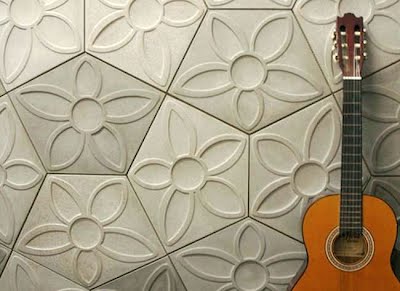 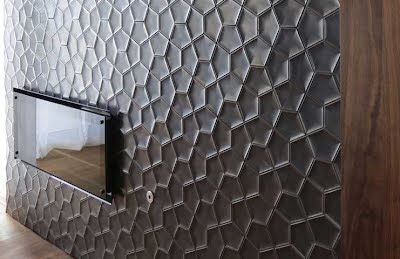 © Daniel Ogassian, Penta Flora, left, Penta 3D, right There is no mention of the Cairo association on his website. Despite a 9 October 2011 request for background detail of the reasons for the choice of tile, the Cairo association, and other related matters, although I received a brief (three-line) reply, nothing on my queries were satisfactorily resolved. Therefore, whether the use of the Cairo tiling is purposeful or accidental, the latter in the sense of a generic pentagon tiling is unknown. However, given the lack of reference, likely the is (or was) unaware of the association. The angles and side lengths are not given, although height and width are, or at least of Penta Flora, 17” x 14¼”. Again, there is uncertainty here. Another Penta Flora reference (on the ‘tear sheet’) gives 8.250” x 11.000” x 0.500” and Penta 3D 8.750” x 11.875” x 0.500”. It is unknown when the Cairo tiling was introduced into their range, or can be implied from when the website was formed, as this is not stated. However, it is at least 2011, when I found his interest, dated from my email to him. Also, see the ‘As Floor Tiles’ page for the floor tiles. Background Little is known on Ogassian himself. From his ‘About’ page: Daniel Ogassian is a Los Angeles-Based artisan turned industrial designer. His work, which he began developing after obtaining his MFA and refining his prototyping at Art Center College of Design, spans free-standing furniture, ceramic and concrete tiles, outsized surfaces, and outdoor ‘vessels’ for plants and water features. Daniel begins with a hierarchy, which works backward from the concept of many of his contemporaries. Daniel has long help minimalism not as a movement but rather “simple decoration with spare use of line and material choices… Cleanly ornate design”. Still, Daniel maintains a humble disregard of function initially and designs to decoration, not form.“Ornamentation preciousness – is at the very nucleus of design. It is the DNA of the form, it is the origin, so that is where you start”. To Daniel, the DNA is where he finds the life, the activity, the movement. Ann Sacks Ann Sacks, founded in 1981 in the US, has built its reputation with innovative and beautiful tile, stone and plumbing that can bring your unique vision to life. Whether your setting is traditional or modern in style, Ann Sacks offers an infinite variety of inspiring designs at a wide range of price points. From classic ceramic flooring to the latest innovations in concrete, glass and recycled metal, the possibilities are limited only by your imagination. http://www.ogassian.com/# https://www.archiexpo.com/prod/daniel-ogassian-64419.html (All Ogassian at a glance.) https://gramha.net/explore-hashtag/ogassian https://pdf.archiexpo.com/pdf/daniel-ogassian/ogassian-catalog/64419-231889.html https://www.annsacks.com/collections/ogassian (tear sheet, click download link)United States (2 of 3), Michigan, of Lea Nigel Studios, run by James Nigel and Andrea Lea Lea Nigel Studios, run by James Nigel and Andrea Lea, of Northern Michigan, US, are the owners of two-person ceramics studio. Here, the emphasis is on a home cottage studio, handcrafted nature, rather than of a global concern, with bespoke orders a possibility. Among the variety of tiles on offer is a considerable feature on the Cairo tiling (being aware of the background), and of which this can be described as their speciality! This is available in a range of sizes, styles and colourings, with Grand Cairo, Petite Cairo, and Split Cairo. https://leanigel.com/collections/specialty-field-tile/products/grand-cairo Acknowledgements Andrea Lea, for permissions and additional details. © Nigel Lea, 'Grand Cairo' United States (3 of 3), Dalton, Georgia, of Shaw Floors, with branches worldwide Shaw Floors has a beginning in 1946 as the ‘Star Dye Company’, a small business that dyed tufted scatter rugs, and of which they have subsequently expanded their product range, into carpet, resilient, hardwood, laminate, tile and stone flooring products and synthetic turf, to residential and commercial markets worldwide. They are a wholly owned subsidiary of Berkshire Hathaway, Inc. with approximately 20,000 associates worldwide. Shaw is headquartered in Dalton, Georgia, with salespeople and/or offices located throughout the U.S. as well as Australia, Brazil, Canada, Chile, China, France, India, Mexico, Singapore, United Arab Emirates and the United Kingdom, so there’s plenty of opportunities for any Cairo tiling enthusiast to purchase for their home project! Despite the name of the company, the instances are of marble wall tiles, seemingly imported (no more specific detail is available) and are titled (obscurely) as ‘Estate Pent Mo’, from Italy and ‘Chateau Pentagon Mosaic’, from China. No mention of the Cairo association is made on their page, and so likely they are unaware of association. An August 2019 query to the company for more background details to this instance went unanswered. https://shawfloors.com/flooring/tile-and-stone/details/chateau-pent-mo-cs24x/rockwood United States (3 of 4), Augmented Architectures, Frank Melendez and Seth Payne Frank Melendez, of Augmented Architectures, and Seth Payne, a ceramicist, both the US, in a collaboration, used the Cairo tiling as a prototype for a wall-mounted tiling system. However, this collaboration does not appear to be on an equal footing; Melendez appears to be very much the leading figure here, with the ideas and concepts, whilst Payne seemingly ‘merely’ puts this project into reality, as a ceramic artefact. Further to my conjecture, Melendez discusses this extensively on his website, whilst Payne does not mention it on his. Quite best how to ‘assess’ this as to what it inherently is, is not easily done. Certainly, it is not a wall tile in the conventional 2D sense, as with others here. However, as it is stated as for a wall, I nonetheless have decided to include. Melendez titles this as ‘Cairo Cast’, and wrote about the project in [1]. It is not entirely clear if the project continued beyond the prototype stage. As can be seen, this is of a 3D ceramic, of which I excerpt the first lines from the article: The second project, titled Cairo Bloom, is the result of a collaboration with Seth Payne. The project explores the potential to create a three dimensional tiling system, based on the Cairo Tessellation, that achieves variation within a field through the use of a components with subtle differences. In this study, an algorithmic pattern of curves, within the boundaries of an irregular pentagon, was produced to generate the tooling paths for a CNC milling machine.... The Cairo association is made and so the use of the Cairo tiling is indeed purposeful. The angles and dimensions of the tile are not stated. I contacted Melendez for more background details and image permissions but he did not respond. I did not contact Payne. Augmented Architectures Augmented Architectures is led by two partners Nancy Diniz and Frank Melendez. Augmented Architectures is a research and design practice developing projects that operate in-between the human body and architectural scale and engage topics pertaining to biotechnology, digital and bio fabrication, computational design, virtual reality, interactive design and data visualization. We create interactive installations, wearable devices, sustainable material systems, and drawings as extended notions of architecture. Frank Melendez Frank Melendez is an architect and educator practising in New York City. Frank is an Assistant Professor at the City College of New York, Bernard and Anne Spitzer School of Architecture. Frank is the author of the book Drawing from the Model; Fundamentals of Digital Drawing, 3D Modeling and Visual Programming in Architectural Design and has published texts that focus on the role of responsive technologies in architectural design and educational pedagogies. These works have been supported through grants and fellowships, including the MacDowell Colony, in which he was awarded a 2017 Artist-In-Residence fellowship. Frank has held academic appointments at Carnegie Mellon University, where he was awarded the George N. Pauly, Jr. Fellowship. as well as Louisiana State University, and Arizona State University. He is co-Director of the IaaC New York Global Summer School. Frank holds a Bachelor of Architecture from the University of Arizona and a Master of Architecture from the Yale School of Architecture. His professional experience includes working at URBAN A&O, New York, NY, and Frank O. Gehry & Associates in Santa Monica, CA. Seth Payne Seth Payne is best described as a ceramicist, and is from Pennsylvania, US. He makes unusual objects for the living of everyday life: plates that hang on the wall like a series of minimalist paintings, bowls that nest in a sculptural tower and funerary urns that feel like contemporary artefacts. References [1] Melendez, F. ‘Computation and Clay: Evolving Fabrication and Performance Strategies for Ceramics in Architecture’, 2015. American Institute of Architects (AIA)/Association for Collegiate Schools in Architecture (ACSA) Intersections Conference, Intersections Between the Academy and Practice: Applied Research in Architecture Education That Advances Practice. https://www.brikbase.org/sites/default/files/Intersections2015_15.pdf The article. See pp. 112-114. United States Suppliers BV Tile and Stone company supply the HRG-Heralgi, Spain, range: http://bvtileandstone.com/ceramic-porcelain-floor-and-wall-tile/pentax-wall-spanish-pentagonal-wall-tile-hrg-heralgi-orange-county/ Ukraine Suppliers Imperia Laminata, of the Ukraine, with branches in Odessa, Kiev, Dnieper, describe themselves as ‘more than just a laminate and parquet board store’. Company details are sparse. They appear to be a general purpose homeware company. As such, they appear to be suppliers rather than manufacturers. They market the Cairo tiling as ‘Ceramic Wall Tile Almera Ceramica Chic’; this is clearly an import, from Spain. Possibly Almera have supplied this themselves from APE Grupo Cerámica (from the same city, Castellon), as the instance shows the same name and resemblance! https://www.imperia-laminata.com.ua/product/keramicheskaya-plitka-dlya-sten-almera-ceramica-chic Essentially originally created as 'Ceramic Tiling': 11 November 2015, with KIN Ceramics. 12 November 2015 Huguet. Re-organised 4 April 2019 under changed title, 'As Ceramics' as part of a new themed series of the 'Cairo Tiling As...' instances. Re-organised shortly afterwards once more, re-titled as 'As Wall Tiles', to better reflect the purpose, rather than the (ceramic) material, which can, I believe, apply to both floor and wall. 3 June 2019. Malaysia, Guocera text and link added. 12 June 2019. Spain, DSIGNIO and Peronda Group text added. 3 July 2019. United States, Daniel Ogassian added. 22 July 2019. Italy, Faenza, Gigacera company, Argilla range added. 29 July 2019. Spain, Cerámica Decorativa picture and text added. 30 July 2019. United States, Nigel Lea picture and text added. 31 July 2019. United Kingdom, Bedrock tiles text added. 1 August 2019. Spain, HRG - Heralgi, text added. Revised 19 August 2019, for a consistent text with other entries. 2 August 2019. Turkey, Yigit Ozer and Kutahya Seramik text added. 5 August 2019. Italy, Sassuolo, by Marca Corona Ceramics Company text added. Revised and expanded 15 August 2019. 6 August 2019. Spain, Ceraspaña International 39’ picture and text added. 12 August 2019. United States, Shaw Floors text and link added. 13 August 2019. Spain, APE Grupo Cerámica text and links added. 14 August 2019. Australia, Metz Tiles text added. 15 August 2019. Israel, Balatot Ceramics Company text and links added. 16 August 2019. Poland, Artis Visio, text and pictures added. 19 August 2019. India, NITCO text and links added. 20 August 2019. Italy, Anna Zirbi text and links added. 21 August 2019. Australia, Woven Image, text and links added. 22 August 2019. India, Rajdhani Marble & Tiles, text and links added. 23 August 2019. China, Fansolic, text and links added. 26 August 2019. China, Venado, text and links added. 27 August 2019. China, Quanzhou Guanpeng Trading Co. text and links added. 28 August 2019. China. KST Building Materials Co. Ltd. of Guangdong, text and links added. 29 August 2019. China. Xinbotao Ceramics Co. Ltd., text, picture and links added. 30 August 2019. China. Caron Stone Co., Ltd., text, picture and links added. 3 September 2019. Finland. Laatakeskus text and links added. 4 September 2019. UK, Verde Ceramica, text and links added. 5 September 2019. Poland. Ceramika Nowa Gala, text, picture and links added 6 September 2019. United Kingdom. Heliot & Co./Giles Miller Studio, text and links added. 11 September 2019. Italy, Pastorelli text, picture and links added 18 September 2019. China, Xiamen Just Stone Co., Ltd, text, picture and links added. 19 September 2019. Australia, Sydney, Stone Concepts Oz, text and links added. 23 September 2019. Italy, Casalgrande, Refin Ceramiche, text, picture and links added. 24 September 2019. Italy, Casalgrande, Casalgrande Padana, text, picture and links added. 25 September 2019. Italy, Ceramica Colli di Sassuolo, text, picture and links added. 26 September 2019. Italy, Casabella Ceramiche, text, picture and links added. 27 September 2019. France, Normandy Ceramics, text and links added. 30 September 2019. Spain, Almera Cerámica, text, picture and link added. 1 October 2019. Turkey, Termal Seramik, text, picture and link added. 2 October 2019. Malaysia, Guocera, text and links, greatly expanded from an initial four-line entry of 3 June 2019. 4 October 2019. Italy, Dvne, text, picture and links added. 8 October 2019. Germany, OBI, text, picture and links added. 31 October 2019. United States, Augmented Architectures, Frank Melendez and Seth Payne text and links added. 15 November 2019 United States, Daniel Ogassian, revised and greatly expanded |
Cairo Tiling >
